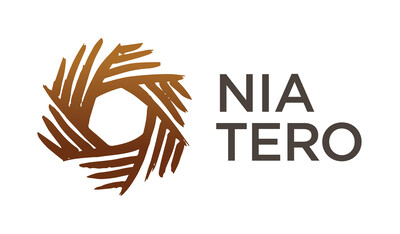NT-2024-AR - Flipbook - Page 35

APPENDIX
Glossary of Terms
Guardianship: The ability of Indigenous Peoples to act upon an inherent right and acceptance
of responsibility to govern and manage territory using their own laws and values. Nia Tero
honors the diverse ways in which people understand this term. For us, it is linked to cultures,
languages, and practices that have developed in tandem with thriving land, water and place,
and has a vital intergenerational dynamic.
The following terms and definitions are meant to be understood
in the context of Nia Tero’s work and mission and are not meant
to present a position on their definition outside of this context.
Agency: The rights and capacity of Indigenous Peoples living in a territory to speak for
themselves and make their own self-determined choices. This includes representation,
economic well-being, development and governance.
Biocultural Approaches to Monitoring: Monitoring approaches that explicitly start
with cultural perspectives connected to territory – encompassing (place-based) values,
knowledge, relationships and needs – and that recognize mutual interdependence between
ecological state and human well-being. They measure the things that matter to the people
who hold the territory in question.
Co-responsibility: An obligation or a commitment to achieve common outcomes shared
among the people living in a territory, their partners and Nia Tero, and that is clearly defined
in a shared commitment.
Cultural Continuity: A dynamic process of upholding and reactivating relationships, values,
and spirituality – an Indigenous way of being – in a rapidly changing world. It is both the
way and age-specific responsibility to receive, generate/process and transmit traditional
knowledge, wisdom and practices from generation to generation through families, kinship
structures and life-asserting connections to the place and ancestral memory. It is a
determining factor of Indigenous identity and self-determination as a distinct people.
Engagement: The act of approaching Indigenous Peoples managing territories identified
by Nia Tero. It involves requesting permission to visit their territories, spending time with
them in their territories, sharing Nia Tero’s mission and priorities, and learning about their
governance structure, vision of the future, priorities, and challenges.
Financial Sustainability: The long-term condition of having financial means available to
enable people to secure the guardianship of their territories.
Governance: The ability of Indigenous Peoples to define and maintain clear mechanisms,
processes, and rules that guide decision-making and the implementation of a self-determined
vision of well-being that secures cultural continuity and the health of the ecosystems they
depend on. This concept recognizes long-standing customary governance mechanisms.
68
Nia Tero
Indigenous Peoples: Nia Tero recognizes that Indigenous Peoples of different regions
define the term Indigenous Peoples differently and does not endorse any one definition.
Our approach is to work with Indigenous Peoples and local communities who share
characteristics linked to a territory and have a strong connection to values and cultural
practices developed in tandem with that territory.
Indigenous Territories: The lands and waters that Indigenous Peoples and local communities
occupy collectively. Specifically, it is a distinct geographic, cultural and ecological space that
is common to a specific Indigenous People, group of peoples or local community. Tenure
is held collectively – either legally or de facto – and resource definition and use, as well as
cultural practice, is governed within a common property context.
Long-term Sustainability: The quality of being able to continue implementing key activities
to ensure Indigenous Peoples’ guardianship of vital ecosystems. It involves securing that
financial sustainability is in place and that good governance is maintained over time.
Nia Tero: Our organization’s name, “Nia Tero,” means “Our Earth” in Esperanto, a language
created in the late 1800s to promote peace and harmony. Esperanto is a second language to
all, first to none, allowing people who speak different native languages to communicate while
retaining their own language and cultural identity. This concept of unity while upholding
identity embodies the heart of Nia Tero.
Partners: Indigenous Peoples, NGOs, and other groups and individuals working together
and with Nia Tero to strengthen Indigenous Peoples’ guardianship.
Place-Anchored Partnership: Existing or potential relationship between the people living in
an Indigenous territory, their partners and Nia Tero that secures a self-determined vision for
guardianship and well-being.
Self-Determined Vision: Vision developed by Indigenous Peoples living in a territory
that describes their contemporary sense of well-being, their dreams for the future and
their priorities. This vision can be transmitted orally, can be found in existing community
development plans (such as a “life plan”), or can be developed with Nia Tero’s support.
Shared Commitments: Co-responsibilities, activities, monitoring, and conflict resolution
processes that result from equitable negotiation with partners to secure Indigenous
Peoples’ guardianship.
Spirituality: A quality of being that transcends our physical reality and provides a deep
sense of aliveness and interconnectedness.
Vital Ecosystems: Specific areas of the planet that are essential to the identity and
well-being of peoples living within them, and of a scale and/or have biophysical qualities
that make them of vital importance to the well-being of humanity.
Annual Report 2024
69